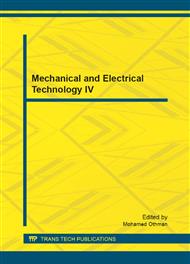p.1347
p.1352
p.1356
p.1361
p.1365
p.1369
p.1373
p.1377
p.1381
The Method of 1394b Bus Transmission Cable Electrical Characteristics Testing
Abstract:
This paper presents a method of 1394b bus transmission cable electric parameters testing and provides a reliable way in selecting transmission cable. This paper introduces the IEEE-1394b protocol for transmission cable of electric parameters and requirements. We set up platform for 1394 cable testing, taking four kinds of 1394 bare wire cable and cable with Quadrax connector for dielectric withstanding voltage, differential impedance and so on. Using this test method can accurately reflect the 1394 cable’s electrical characteristics.
Info:
Periodical:
Pages:
1365-1368
Citation:
Online since:
November 2012
Authors:
Keywords:
Price:
Сopyright:
© 2012 Trans Tech Publications Ltd. All Rights Reserved
Share:
Citation:


